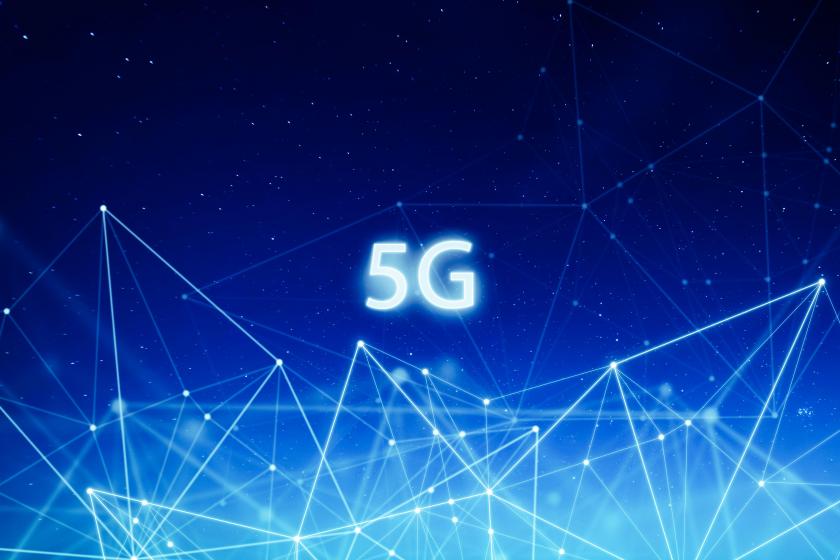Private Wireless: Networking Enabler for Digital Transformation
Wi-Fi and private wireless services will coexist for the foreseeable future and will be the networking enablers for digital transformation.

Whether referred to as private mobile networks (PMNs), private wireless, private 5G, or non-public networks (in 3GPP vernacular), private networking solutions based on cellular mobile 5G technology continue to represent an increasingly viable — and valuable — option for enterprises in nearly every industry sector.
In fact, recent technology improvements and more open government spectrum policies worldwide have increased enterprise willingness to adopt private wireless. This is especially true now that it’s clear to enterprises that a private wireless network can be complementary to existing Wi-Fi. More on that later.
Private wireless networks will eventually be predominantly 5G, though many of today’s networks use 4G LTE technology (due to the larger current ecosystem of equipment and compatible user devices).
The market agrees that private wireless is the future of advanced connectivity. Private networking is generating increased interest and growth projections from Mobile Network Operators (MNOs), vendors, and the analyst community.
Conservative estimates now place the market for private wireless at between $7-8B by 2025. That’s on par with the size of the enterprise Wi-Fi market today. This growing opportunity is motivating MNOs, global systems integrators (GSIs), and hyperscale cloud providers like Amazon Web Services to invest in enterprise private wireless offerings.
Where the “rubber meets the road” for realizing the full value of private wireless is at the intersection of the enterprise use case and the awesome potential of deploying a private wireless solution for supporting over-the-top applications (and serious value-driven implications).
Benefits of Private Wireless
What can enterprises expect from a private wireless solution? Don't let the cloudiness surrounding the pitting of private wireless vs. Wi-Fi distract from the key value propositions of a private solution. Actually, private wireless and Wi-Fi deployments can complement each other if architected correctly.
To clear the air: there are some use cases in which a private wireless network is more suitable than Wi-Fi. Private networks offer a broader indoor range and improved outdoor coverage compared to Wi-Fi. Devices on 4G LTE and 5G networks can operate at greater distances from their serving network nodes (approximately four times improved coverage per radio node indoors and ten times outdoors compared to Wi-Fi Access Points). Cellular technologies also do better with obstructions and in industrial metal-rich environments. Likewise, with managed handover events, devices experience continuous coverage.
Historically, providing cellular coverage at private or semi-public venues involved cooperating with an MNO. With a suitable business case and corporate participation, MNOs would invest in distributed antenna systems (DAS) or small cells to extend macro network coverage into enterprise campuses, multi-tenant office buildings, stadiums, arenas, and airports.
However, these systems — which are both costly and complex — utilize spectrum licensed by the MNO, and enterprises would have to negotiate to get private or priority access to these spectrum bands.
Similarly, a great deal of coordination between the MNOs' use of the same spectrum in the outdoor network led to a host of performance challenges.
Enterprises across industry verticals can expect the same or similar benefits by switching to a private wireless solution. Some of those benefits include:
Minimum interference, maximum reliability: When implemented based on your unique use case and by the right networking partner, private wireless provides better and more precise control over spectrum resource allocation and traffic prioritization. This means that the different endpoints and applications received the right service quality, no matter how much bandwidth they required.
Deterministic Latency and Capacity: Through end-to-end control in the hands of the enterprise, private wireless ensures deterministic latency for performance-critical workloads and mission-critical applications. Because a private network has more extensive capacity-handling capabilities than Wi-Fi, transmission can be scheduled across many IoT devices to ensure uninterrupted connectivity.
Improved Security and Privacy: Many private wireless networks default to a secure mode that uses physical subscriber identity modules (SIMs) or software-provisioned embedded SIMs (eSIMs) for identification and access control. Like Wi-Fi, traffic is confined within an enterprise network, but with a private wireless solution, it is encrypted by default, where Wi-Fi needs to be configured correctly to be secure.
Resiliency: Where a public cellular network is available, and if devices support the appropriate spectrum bands, a public network (or a private slice of a public network) can be used as a fallback.
Public-Private Mobility: In partnership with an MNO and with devices with the necessary spectrum band support, endpoints and devices can transition seamlessly from the private network to a public network and back. This untethering of devices from a single network provides increased mobility for applications in transit.
Reduced Total Cost of Ownership (TCO): One individual private cellular radio does cost more than a single Wi-Fi access point (AP). However, fewer radios per unit area are needed, reducing capital expenditures and operational costs associated with running structured cabling to radio units or APs in new network buildouts or upgrades. As well, there are no metering or data fees with a private wireless solution, reducing TCO compared to MNO networks.
Wi-Fi and Private Wireless are Complementary Technologies
A battle of the titans? Probably not. Wi-Fi will continue to flourish as new post-Wi-Fi 6/6E standards, namely Wi-Fi 7 and beyond, become available. Newer versions of the Wi-Fi specifications, notably Wi-Fi 6 and 6E, borrow performance-enhancing techniques from mobile technologies to improve capacity and performance under congestion.
Industry and industry analysts agree: Wi-Fi and private wireless will coexist for the foreseeable future. Wi-Fi device support is ubiquitous and inexpensive to deploy, and when interference is minimal, Wi-Fi can deliver strong performance at a low cost. Wi-Fi will continue to be used for general and non-critical access, while private networking solutions will be applied to critical communications, industrial, and business use cases.
At the same time, a new ecosystem of device manufacturers and service providers is emerging to deliver the range, speed, capacity, and automation enabled by Wi-Fi 6E technology. OEM manufacturers are signing up to integrate Automated Frequency Coordination (AFC) technology into their Wi-Fi 6E portfolio to power enterprise-level digital transformation across a broad range of use cases.
Realizing Digital Transformation through Private Wireless
Unique use cases are driving leading industries, including manufacturing, healthcare, warehousing and distribution, transportation hubs, mining, and oil and gas, to adopt private wireless solutioning. For these industries, IoT and industrial IoT (IIoT) technologies underpin their digital transformation, and reliable connectivity is critical to moving IoT data between industrial devices and control applications onsite or in the cloud.
The value of IoT is tied to businesses acting on insights from the use of big data analysis and artificial intelligence and machine learning (AI/ML).
Bottom line: the level of connectivity that private wireless delivers, which meets the enterprise security and isolation criteria for critical workloads, is needed to unlock the total value of IoT and digitization...and to keep pace with modern enterprise requirements.
Kurt Schaubach is Chief Technology Officer for Federated Wireless.
Related articles:
Read more about:
5GAbout the Author
You May Also Like




